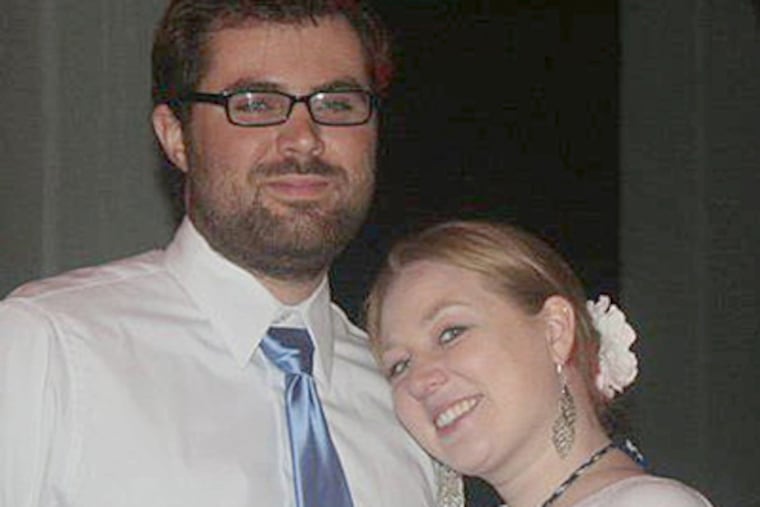Kevin Riordan: Merger proposal affecting recruiting at Rutgers-Camden
When the Rutgers-Camden acceptance letter arrived at his Nashville home, Greg Sullivan was thrilled.

When the Rutgers-Camden acceptance letter arrived at his Nashville home, Greg Sullivan was thrilled.
Worried, too. Would it be wise to uproot himself, and his wife, to pursue a master's degree in creative writing at a respected institution that could be merged into something unrecognizable - and unrecognized?
"I have concerns that some of my faculty [could] leave while I'm there or before I arrive," says Sullivan, 27, a sportswriter for the Tennessean newspaper.
Lindsay Sullivan is finishing a nurse-practitioner program at Vanderbilt University. She wants to work in an urban hospital, and she and her husband are eager to sample what the East Coast has to offer.
But Gov. Christie's proposal to divorce Rutgers-Camden from the state university system and merge it with Rowan University complicates the couple's decision.
The Sullivans are not alone.
"The uncertainty about the fate of our campus has made recruiting [students] something of a challenge," says Lisa Zeidner, director of the MFA program in creative writing at Rutgers-Camden. The well-regarded program attracts students from around the world.
"All students who enroll in 2012 have been promised a Rutgers degree," Zeidner says, citing a vow Christie has made repeatedly since Jan. 25, when he stunned many at both universities with his plan.
"Students enrolling now," Zeidner adds, "will have our excellent MFA program as we designed it."
But if Rowan absorbs Rutgers-Camden, some faculty members are likely to depart and academic reputations may suffer, at least initially.
"It would take us decades to rebuild what we have here," Zeidner says.
Students entering Rowan this fall will likewise receive degrees from that institution. But the Glassboro campus is also feeling anxious.
"I've been fielding questions from parents," says Joe Cardona, Rowan's director of university relations.
"The one that's probably come up the most is about sports," he says. "People want to know if the [teams] are going to merge.
"We tell people it will take years for the universities to be fully integrated," Cardona adds. "Students entering this fall probably wouldn't [notice] anything."
Christie insists that the benefits of a combined new research university in the region would be nothing short of stupendous. Yet many fear that Rutgers-Camden has more to lose than to gain - a prospect that has the campus deeply shaken.
The percentage of accepted undergraduate applicants who have committed to attending Rutgers-Camden in the fall is lower than at this time last year, according to university officials.
The law school also is feeling the effects.
"We've had a number of withdrawals," says Rayman Solomon, dean of the Rutgers School of Law-Camden. "We normally have a handful, and we've had a lot more than that."
At Rowan, candidates for the university presidency have all withdrawn because of the upheaval, causing the school to put its search on hold. But applicants for two teaching slots at the Rutgers-Camden law school "are still considering" joining the faculty, the dean notes.
"I'm not a total pessimist," Solomon adds. "There's still time to recruit a class."
First-year law students typically number about 240; Zeidner's program accepts about 20.
Sullivan, who was the first member of his family to attend college (he and Lindsay met at the University of Georgia) and has applied to a number of schools, still wants to attend Rutgers-Camden.
The writer hopes to work with authors he admires, such as those on Zeidner's faculty. And he hopes to build professional relationships that will endure after graduation.
As Solomon notes, "people want to know that where they go to school is going to be around."
In my view, the human cost of severing or disrupting connections among teachers, students, alumni, donors, and other constituents of two distinct and distinctive university communities has been minimized.
Perhaps the merger maniacs have been blinded by visions of dollar signs.